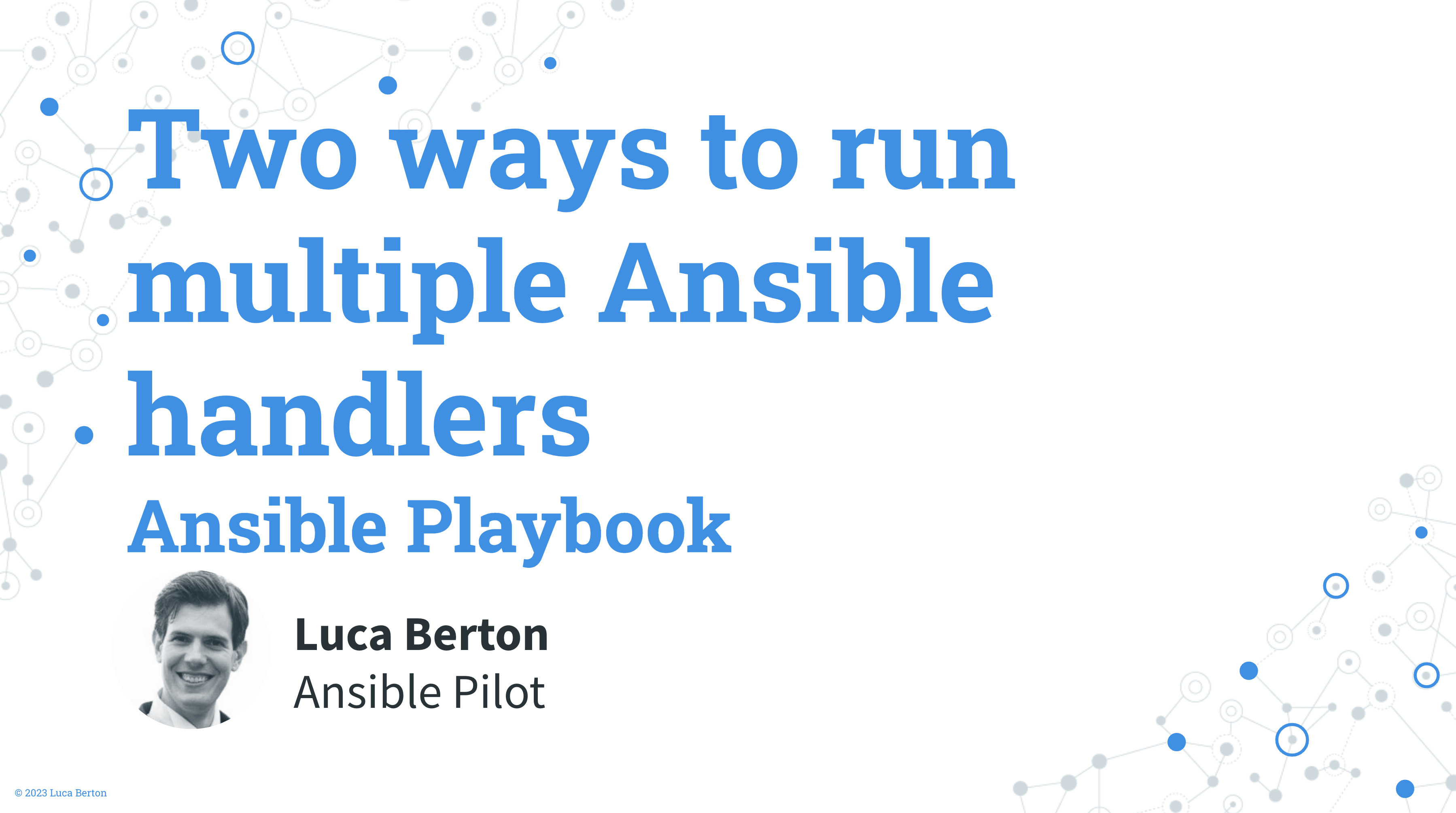Two ways to run multiple Ansible handlers
How to execute two Ansible handlers on a changed status of Ansible Playbook.
What is an Ansible handler?
Handler runs tasks on change.
Handlers execute some tasks only when the previous task returns a changed status. If not necessary, they don’t execute.
Links
Demo
Let’s jump into two real-life examples of how to run multiple Ansible handlers. First of all, we need a task changed status. The simplest Ansible module returning a “changed” status is the command module with a Linux command, like “uptime”. Let’s suppose we would like to execute two handlers on the screen, for example, two messages on the screen.
Solution 1
code
- two-1.yml
---
- name: handler Playbook
hosts: all
tasks:
- name: Test connection
ansible.builtin.command: "uptime"
notify: message
handlers:
- name: message 1
ansible.builtin.debug:
msg: message 1
listen: message
- name: message 2
ansible.builtin.debug:
msg: message 2
listen: message
- inventory
localhost ansible_connection=local
execution
$ ansible-playbook -i inventory two-1.yml
PLAY [handler Playbook] *********************************************************************
TASK [Gathering Facts] ******************************************************************
ok: [localhost]
TASK [Test connection] ******************************************************************
changed: [localhost]
RUNNING HANDLER [message 1] *************************************************************
ok: [localhost] => {
"msg": "message 1"
}
RUNNING HANDLER [message 2] *************************************************************
ok: [localhost] => {
"msg": "message 2"
}
PLAY RECAP ******************************************************************************
localhost : ok=4 changed=1 unreachable=0 failed=0 skipped=0 rescued=0 ignored=0
Solution 2
code
- two-2.yml
---
- name: handler Playbook
hosts: all
tasks:
- name: Test connection
ansible.builtin.command: "uptime"
notify:
- message 1
- message 2
handlers:
- name: message 1
ansible.builtin.debug:
msg: message 1
- name: message 2
ansible.builtin.debug:
msg: message 2
execution
$ ansible-playbook -i inventory two-1.yml
PLAY [handler Playbook] *********************************************************************
TASK [Gathering Facts] ******************************************************************
ok: [localhost]
TASK [Test connection] ******************************************************************
changed: [localhost]
RUNNING HANDLER [message 1] *************************************************************
ok: [localhost] => {
"msg": "message 1"
}
RUNNING HANDLER [message 2] *************************************************************
ok: [localhost] => {
"msg": "message 2"
}
PLAY RECAP ******************************************************************************
localhost : ok=4 changed=1 unreachable=0 failed=0 skipped=0 rescued=0 ignored=0
PLAY [handler Playbook] *********************************************************************
Conclusion
Now you know Two ways to run multiple Ansible handlers.
Subscribe to the YouTube channel, Medium, and Website, X (formerly Twitter) to not miss the next episode of the Ansible Pilot.Academy
Learn the Ansible automation technology with some real-life examples in my
Udemy 300+ Lessons Video Course.

My book Ansible By Examples: 200+ Automation Examples For Linux and Windows System Administrator and DevOps

Donate
Want to keep this project going? Please donate
